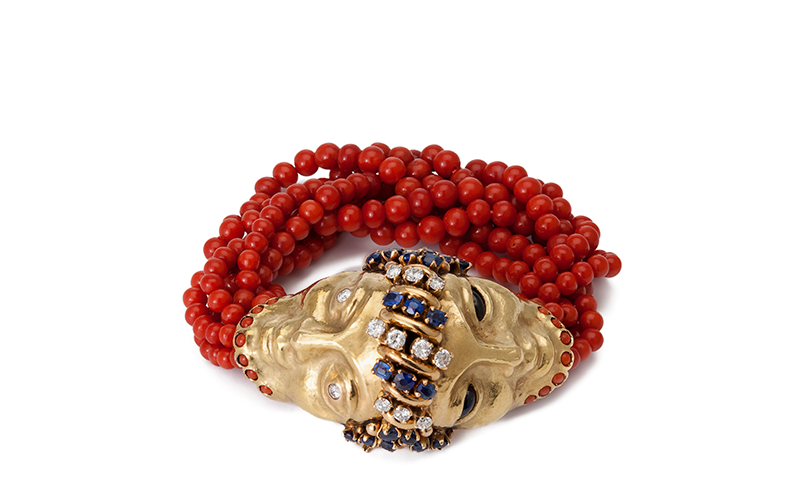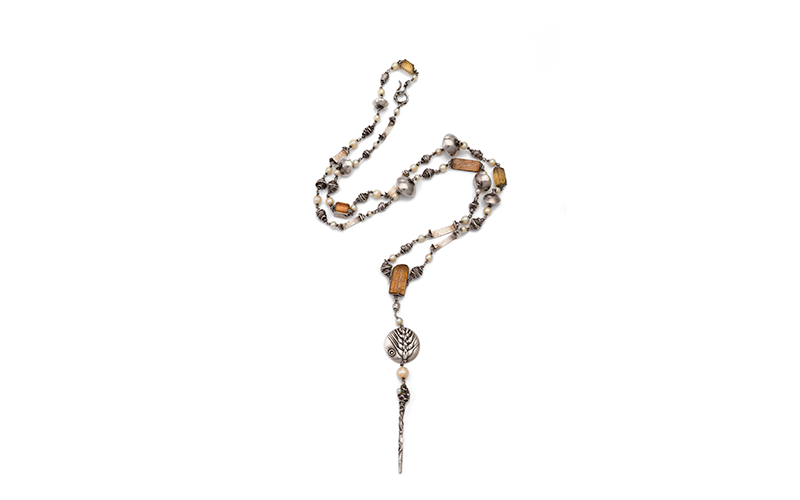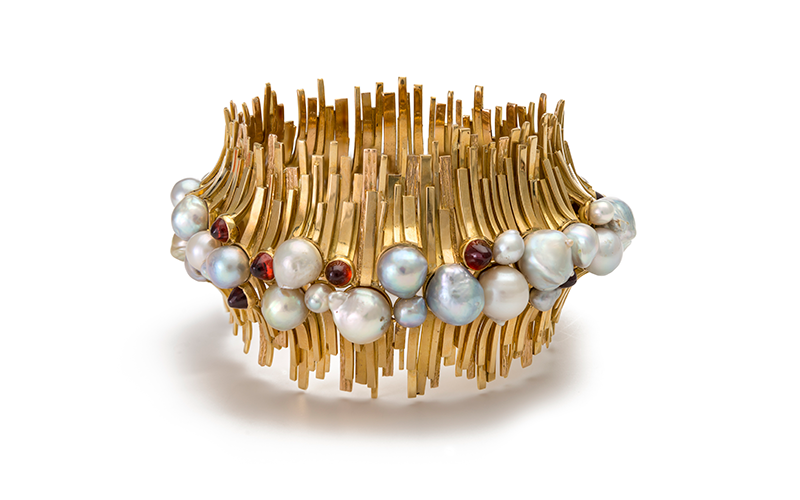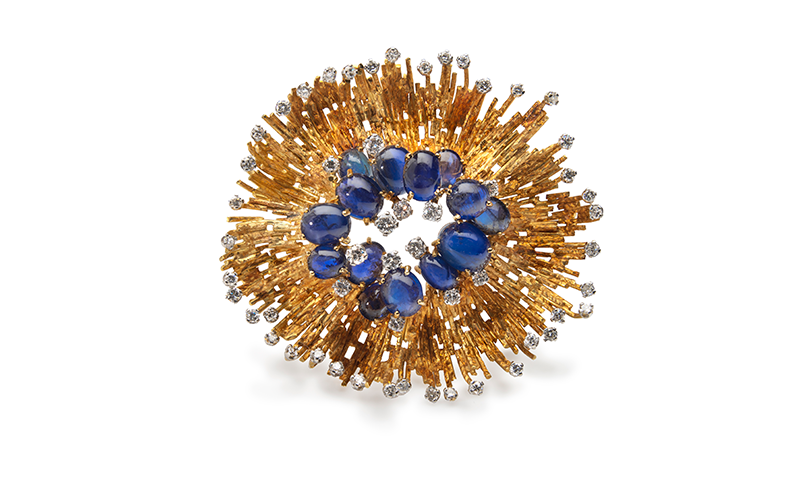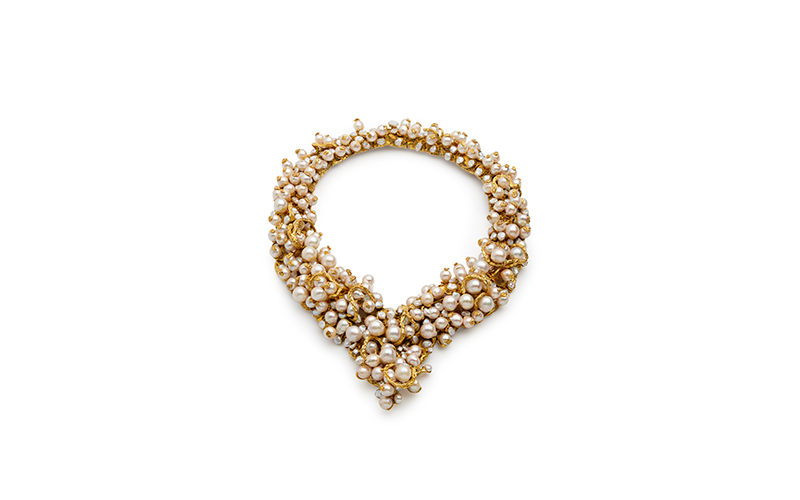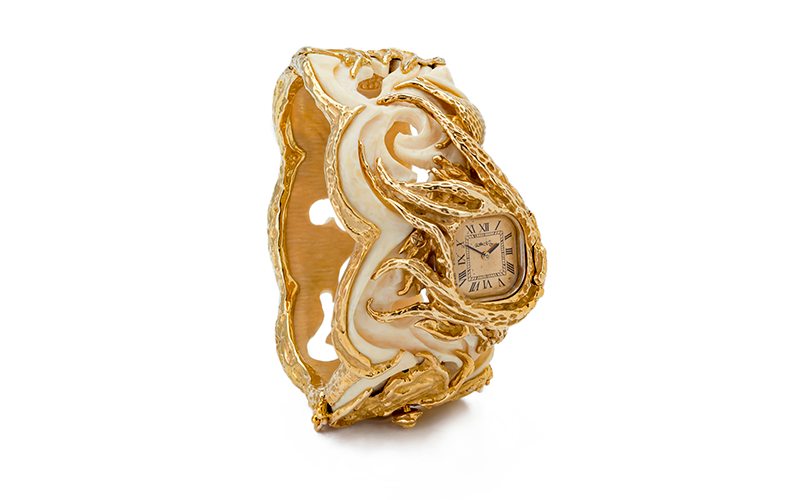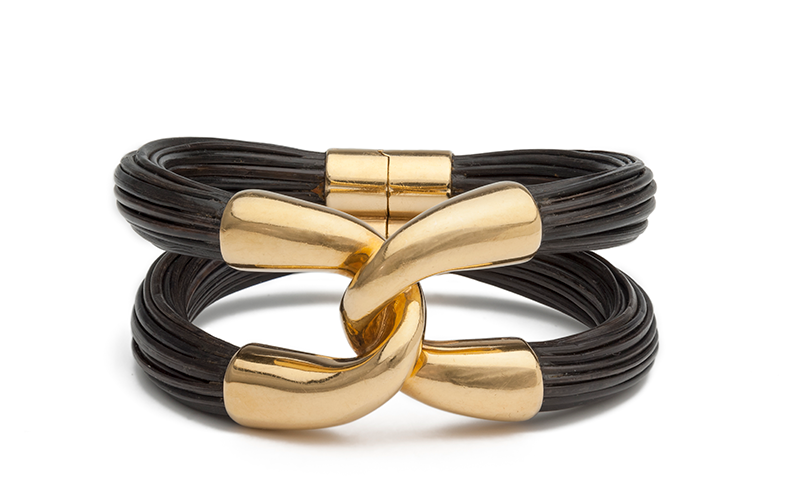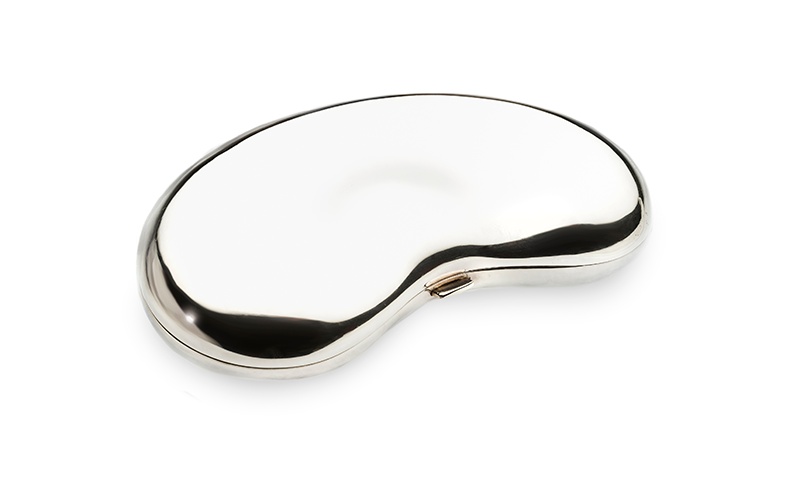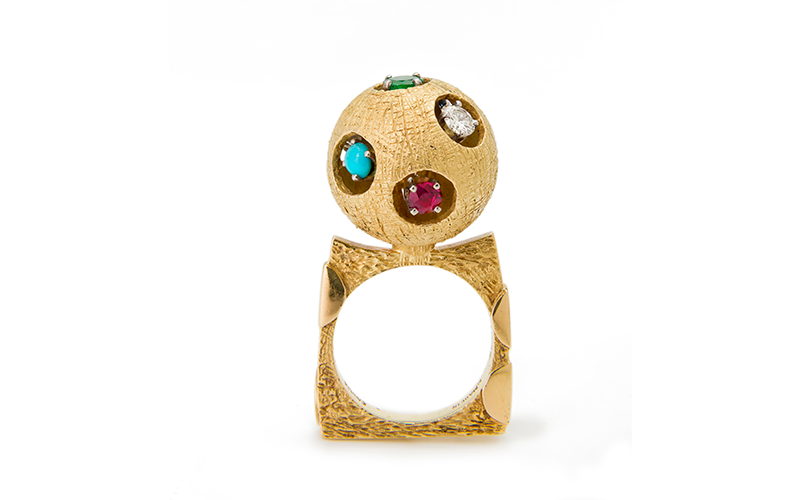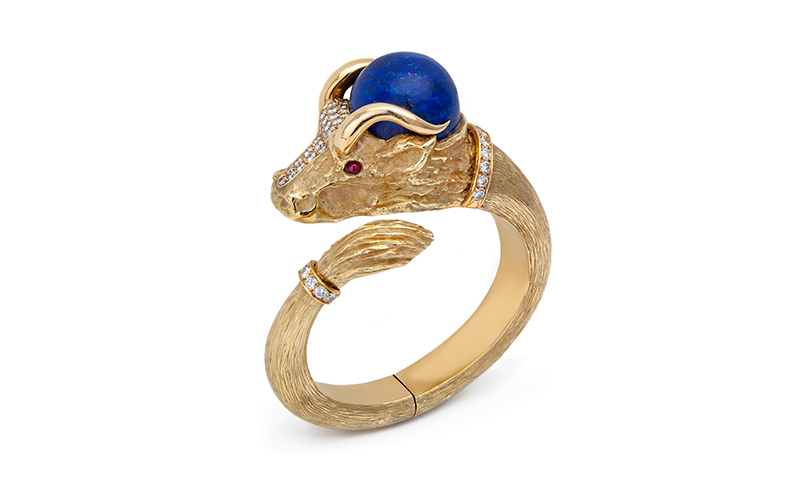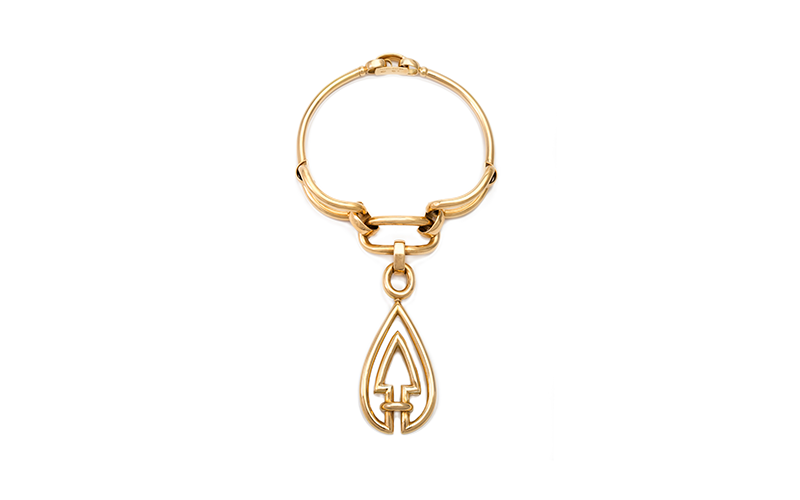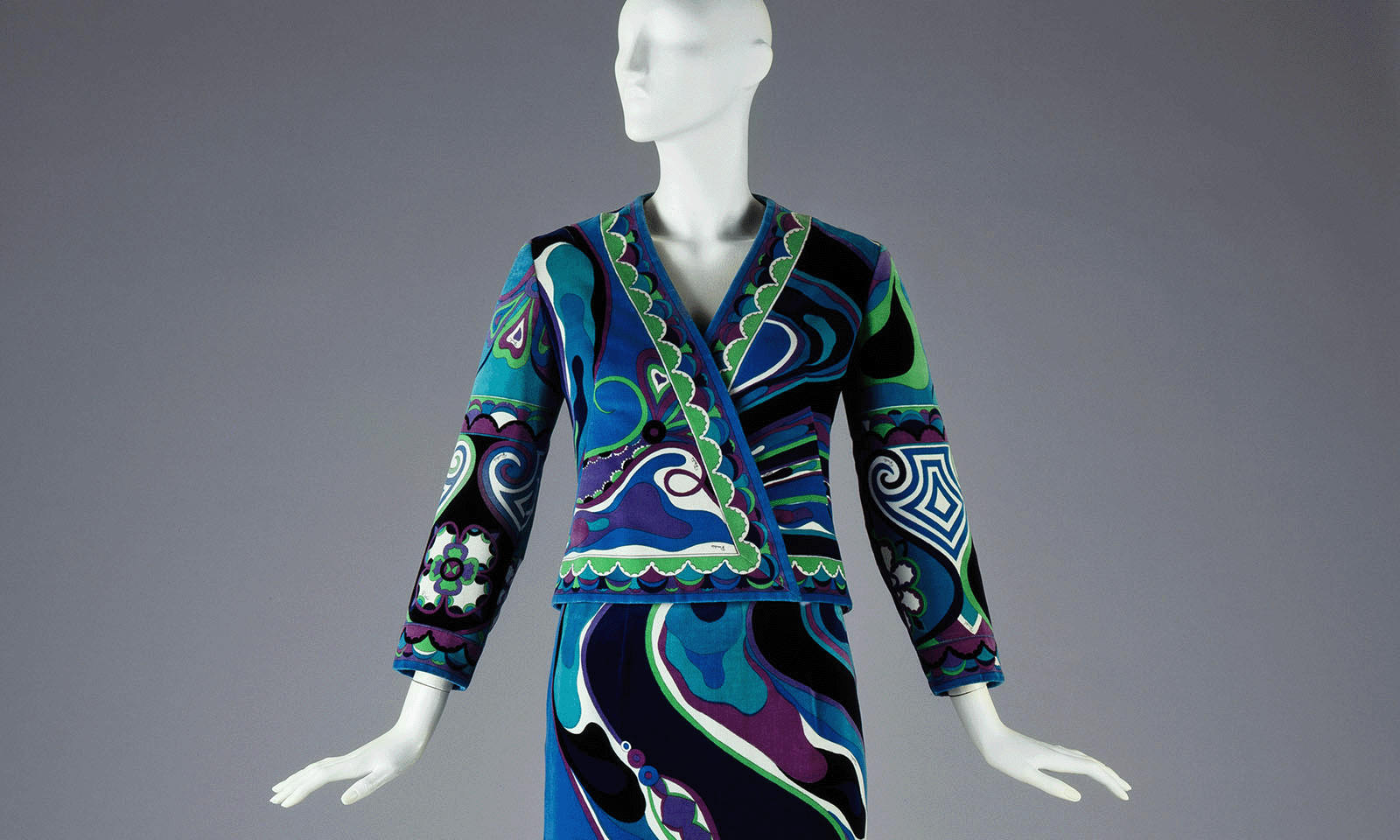- Art
- Exhibitions
- Farm to Table: Food and Identity in the Age of Impressionism
- Cycle Thru! The Art of the Bike
- Tintoretto’s Genesis
- Upcoming Exhibitions
- Online Exhibitions
- Special Features
- Past Exhibitions
- Explore the Collection
- Provenance and Cultural Property
- Conservation
- Meet the Curators
- Digital Resources
- Art Bridges Cohort Program
Simply put, jewelry of the 1960s and ‘70s was revolutionary. While the 1950s were demure and controlled, the following decades became an era of youthful rebellion and radical cultural change—and a new style of jewelry was part of that zeitgeist. Rock ‘n’ roll, the Vietnam War, the Kennedy assassinations, the Civil Rights and Women’s Movements, the widespread use of hallucinogenic drugs, and the concept of free love are all associated with these tumultuous decades. From space-age plastic hoop earrings to the hippie’s beaded necklaces, jewelry expressed individuality, nonconformity, and the values of the person who wore it.
Beyond inexpensive costume jewelry that was available to all, fine jewelry took an equal turn to incorporate the mood of the times. Young designers no longer wanted to create modest baubles or use faceted precious stones to indicate wealth. They thought of themselves as artists first, jewelers second, approaching their work as any painter or sculptor. They worked primarily in yellow gold, focusing on organic forms, favoring abstract shapes and concepts related to space-age trends. They incorporated unconventional materials such as pieces of meteorites or elephant hair and were unrivaled in the texture and scale they brought to their designs.
Drawn from one of the most important private collections in the world, assembled by Cincinnatian Kimberly Klosterman, this exhibition features the work of an international set of independent jewelers and major jewelry houses. The artist-jewelers of the 1960s and ‘70s were uncompromising in their vision, taking their work to a new level of artistry that paralleled the radical changes in society during these decades.
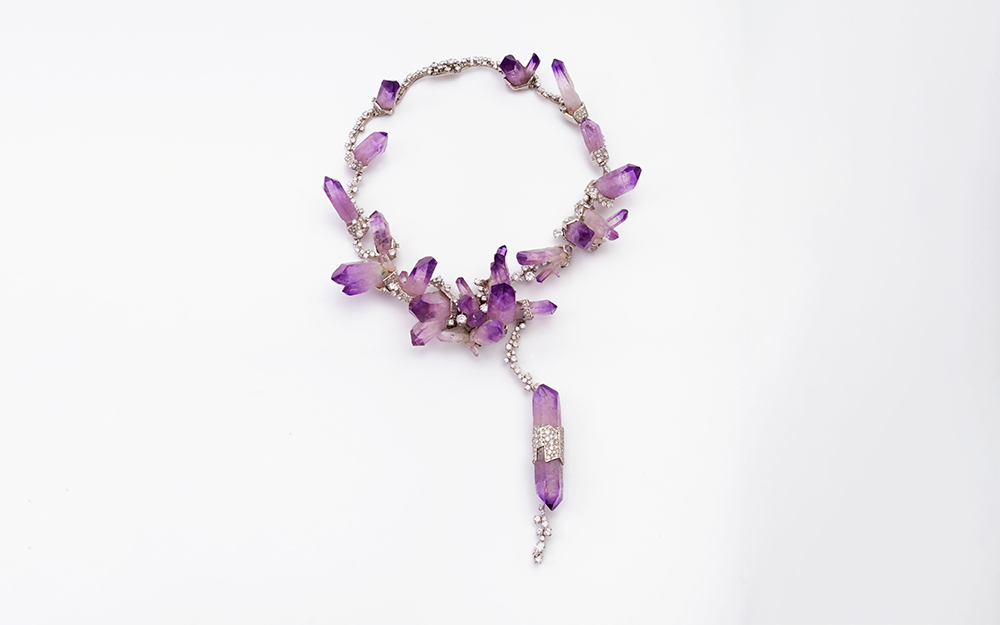
Jean Vendome (French, 1930–2017), Collier Veracruz (Veracruz Necklace), 1972, white gold, platinum, amethyst, diamonds
Audio Description
Called Collier Veracruz or Veracruz Necklace, this necklace was created by Jean Vendome in 1972. Vendome was a French jeweler who lived from 1930-2017.
Set in white gold and platinum, this necklace is interspersed with small, faceted diamonds and long thorn-like amethyst crystals that become more dense towards the center front. The pendant that hangs at the front of the necklace is off-center and suspended from a small semi-circle of diamonds. The semi-circle is attached to a single amethyst crystal that is bound around the center with close set, small diamonds. A row of small diamonds hangs from the tip of that amethyst.
Label Copy
Called Collier Veracruz or Veracruz Necklace, this necklace was created by Jean Vendome in 1972. Vendome was a French jeweler who lived from 1930-2017.
Known in France as the father of contemporary jewelry, Jean Vendome was the son of Turkish Armenian refugees. A jewelry maker by the age of 18, he changed his birth name, Ohan Tuhdarian, to Jean Vendome in the 1950s. From the start, he was not interested in making the same prim jewelry as his predecessors. His work was about the natural beauty of the materials and the originality of the design. He became known for his organic forms and coarse textures. Vendome established himself as an avant-garde designer, always creating something different, something sculptural. His one-of-a-kind creations were designed by understanding a woman’s body and its contact with the jewelry.
Art Nouveau artist and jeweler, René Lalique, was a primary inspiration for Vendome. Reminiscent of the frosted glass elements frequently employed by Lalique, Vendome used jagged amethyst crystals that jut upward like thorns interspersed with diamonds to create this very sculptural piece.


